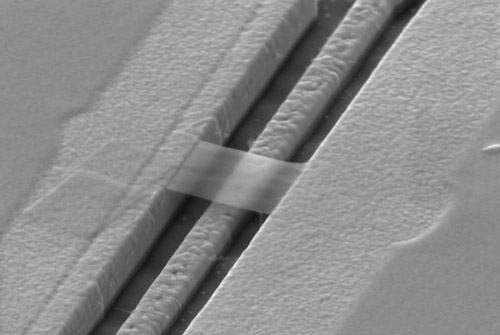题目: Graphene nanomechanical resonators with quality factors exceeding 1 Million
报告人: Prof. Joel Moser 1, 2
1 Soochow University, Suzhou, P. R. China,
2 Institute of Photonic Sciences (ICFO), Barcelona Spain
时间: 4th Jan (Wed), afternoon, 2:30 PM
地点: 李薰楼 468 室
Abstract:
Owing to its ultra-low mass density, graphene is an interesting material for the realization of nanomechanical resonators with potential applications in mass, force and spin sensing. Such applications crucially require low intrinsic mechanical dissipation, that is, a high quality factor, because mechanical sensing is limited by the thermal noise of the resonator. Surprisingly, however, quality factors measured in graphene resonators have not exceeded 200’000, in spite of the high crystallinity of graphene sheets and much progress in fabrication techniques. To try and solve this puzzle, we have performed time-resolved energy relaxation measurements in few-layer, ultra-clean graphene resonators at cryogenic temperature. Our measurement technique consists in transducing the vibrations of the resonator by capacitively coupling the graphene sheet to a superconducting cavity, which allows us to resolve minute displacements of the sheet down to milliKelvin temperature. We coherently drive the resonator, then switch the drive off and measure the displacement oscillations as the mechanical energy freely decays. This technique is immune from frequency noise, and allows us to monitor the oscillation decay over a wide range of displacements. Our time-resolved measurements yield quality factors exceeding 1 million, within reach of quality factors measured in much larger silicon-based and diamond-based microresonators. Interestingly, quality factors estimated from additional spectral linewidth measurements are about three times smaller, indicating that such estimations are spoiled by frequency noise-induced spectral broadening. We also show that dissipation is strongly nonlinear and depends on the amplitude of the motion. Our work demonstrates that, in addition to their ultra-low mass, graphene mechanical resonators also feature very high quality factors; hence, they possess all the necessary ingredients to become excellent sensors.

Fig. 1. Graphene nanomechanical resonator fabricated by suspending a few-layer graphene sheet over the gate electrode of a superconducting cavity. Device done and image taken by Peter Weber, Yiannis Tsioutsios and Johannes Guettinger, ICFO, Barcelona.
Brief Biography:

Joel Moser did his PhD research work on one-dimensional organic conductors at the Solid State Physics Laboratory at Orsay, France, and graduated from Paris University. He worked as a postdoc in the USA and in Germany, then joined Prof. Adrian Bachtold’s group in Barcelona as an associate researcher. There, he worked on the transport and mechanical properties of graphene and carbon nanotubes. He joined the faculty at Soochow University, Institute of Modern Optical Technologies, in 2016.



